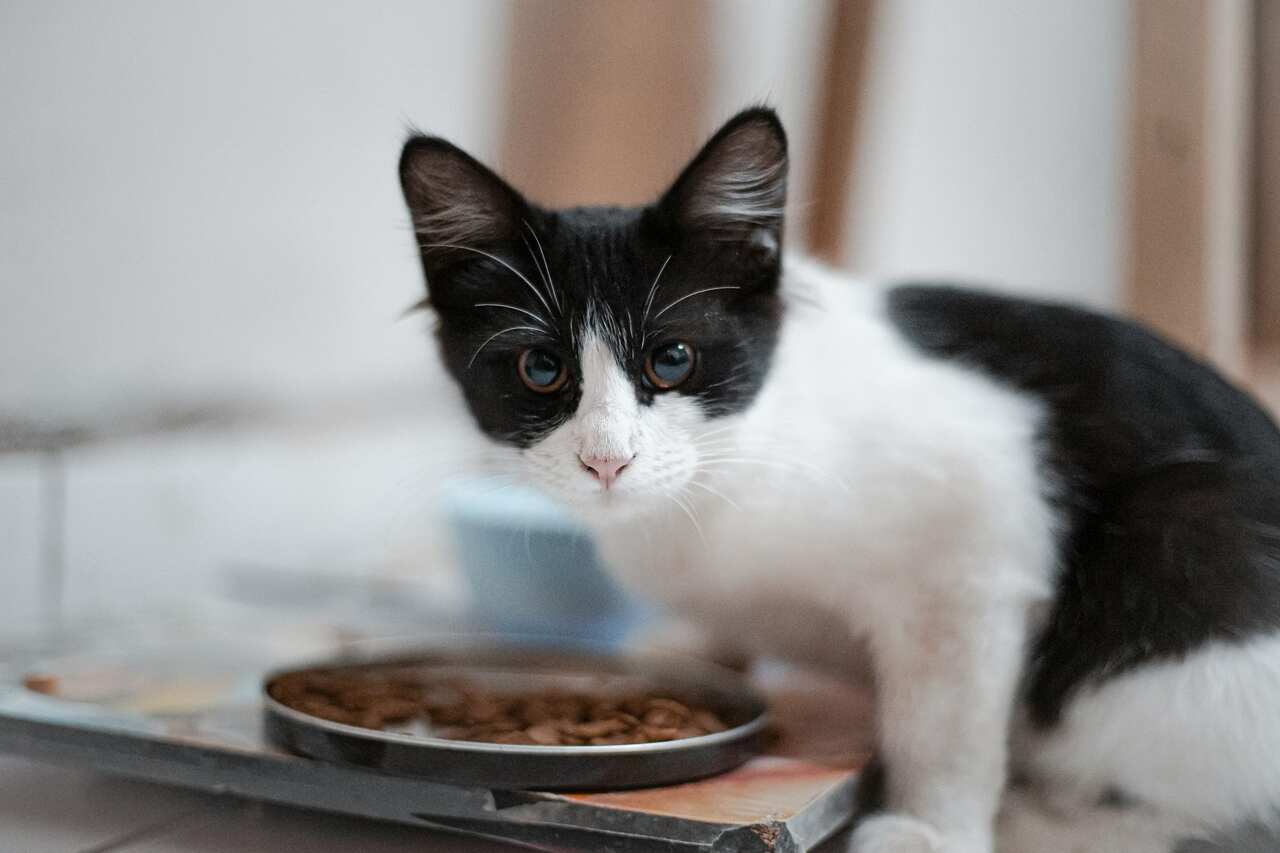
With their unique eating habits and somewhat refined palates, cats gain fame and countless memes on the internet. Who hasn’t seen a post of a cat complaining about being hungry in front of a full food bowl?
+ Meet the ‘Colossus of Rhodes’, a giant cat with 10 families in Greece
While it’s amusing to laugh at these behaviors, understanding the peculiarities of the species makes life easier for the owner and contributes to the well-being of the cats. Veterinarian and DrogaVET consultant Farah de Andrade reveals some myths and truths about felines.
Cats are carnivores – TRUTH
Just like large felines (tigers, jaguars, etc.), domestic cats are also obligate carnivores, meaning their natural diet consists mainly of meat. In the wild, they consume leaves, grains, and vegetables in lesser amounts and through the contents of their prey’s stomach. Therefore, natural foods and commercial cat food also include vegetables, greens, and even carbohydrates, though in smaller proportions.
Some characteristics of cats’ physiology are exclusive to carnivores, such as having fewer molars and premolars compared to dogs, and larger canines to puncture and tear the flesh of their prey. Their digestive system is simpler, with low fiber and carbohydrate intake, a smaller stomach, and a shorter intestine compared to other species. Additionally, cats lack the enzyme that initiates carbohydrate digestion in the mouth, salivary amylase.
Cats cannot taste sweetness – TRUTH
Another curious trait is that they cannot detect sweet flavors due to the absence of a specific receptor and a reduced number of taste buds, around 500, while humans have over 9,000. However, cats do perceive bitter, salty, and acidic tastes.
Although their sense of taste is not like ours, their sense of smell is highly developed: cats have three times as many olfactory cells as humans. Therefore, their food should be very aromatic, and interference from other odors near the food bowls, such as cleaning products and air fresheners, should be avoided.
Cats are picky eaters because they are spoiled – MYTH
What seems like pickiness is actually a protective instinct in cats. Dry food left out for too long loses its freshness, odor, and can even proliferate microorganisms, which is interpreted by the cat as a danger warning. Additionally, they dislike having their whiskers touch the sides of the bowls and may refuse to eat the kibble that settles in the corners.
The veterinarian also points out that it’s ideal to provide food several times a day in the necessary amount for that period. Cats prefer to have multiple small meals rather than large quantities at once, similar to their wild ancestors, who caught small prey multiple times a day.
Considering their ancestry, the preference for moist and soft foods comes from their similarity to fresh meat. “This factor can also be considered when a cat needs treatment. They usually do not accept pills, but they can easily adapt to medications in moist forms, such as sauces and oral pastes, and be attracted to flavorings like fish, chicken, meat, and cheese,” notes the veterinarian.
DrogaVET is a pioneer in veterinary compounding, offering about 20 pharmaceutical forms and 30 flavorings that facilitate treatment adherence for various species.
Eating habits developed in the first 6 months of life also influence choices as adults. If they experience different textures and flavors as kittens, they will adapt more easily to varied diets.
Cats prefer the taste of fish – MYTH
The classic cartoon scene with cats enchanted by the taste of fish isn’t entirely accurate. In the wild, felines hunt more birds and rodents. Therefore, cat foods and natural diets with beef, lamb, and especially chicken are often very popular.
“We should observe the pet’s appetite for the food. If it doesn’t seem very motivated to eat, it’s important to try a new flavor, keeping in mind that changing food should be gradual to avoid upsetting the animal’s digestive system. Also, cats should not go long periods without eating. So, do not try to leave the cat without food in the hope that it will accept the available flavor,” warns Farah.
The veterinarian also reveals that in the pharmacy routine, chicken flavor is the most requested, followed by salmon and tuna. “Knowing the pet’s taste and what stimulates its sense of smell is crucial, not only for the animal’s diet but also for when it needs treatment.”
Besides the dietary peculiarities of felines, it’s important to consider hygiene to ensure food acceptance and the pet’s health. It’s recommended to keep a fixed spot for food bowls, always away from the litter box, and to clean them after meals to prevent microorganism proliferation.
This content was created with the help of AI and reviewed by the editorial team.

